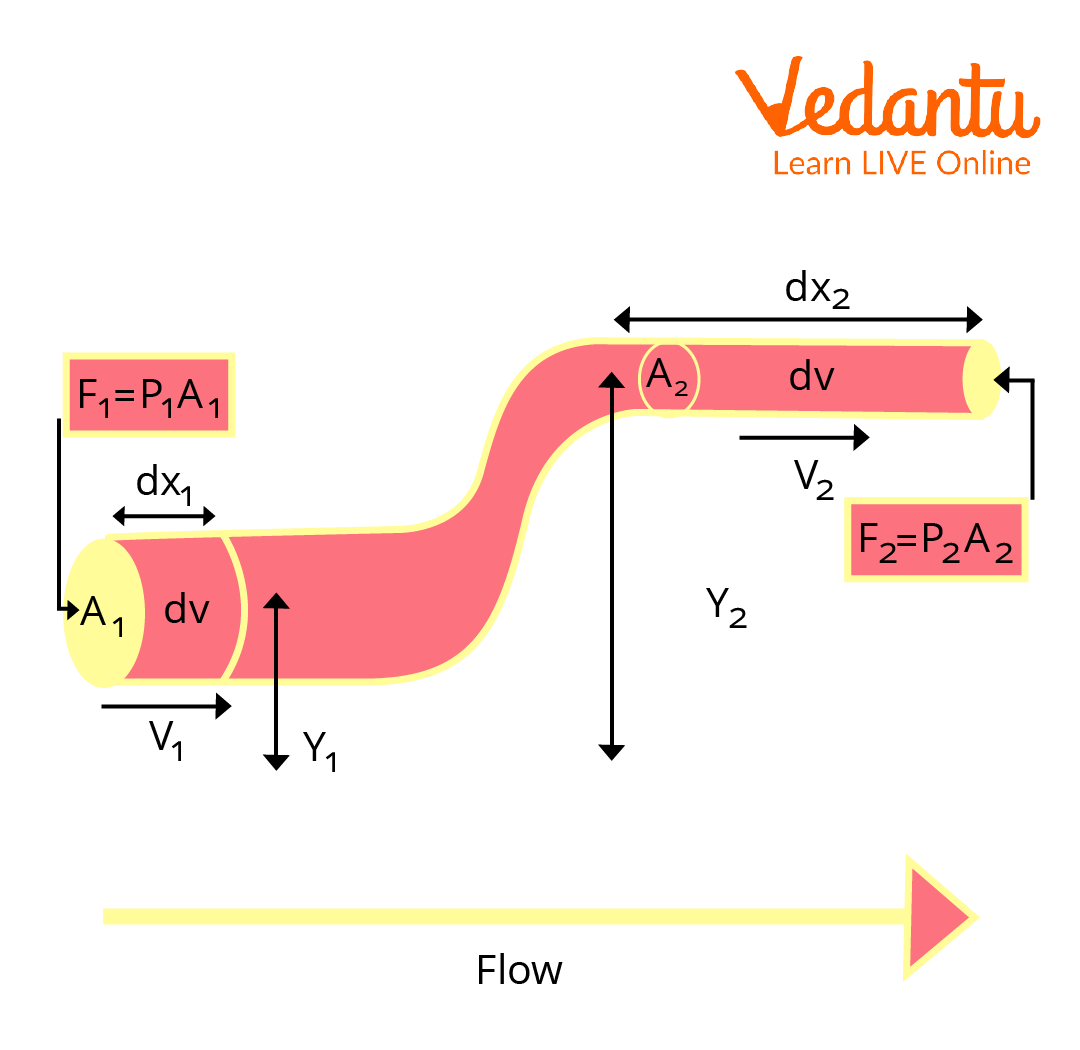




How to Apply Bernoulli’s Equation: Tips & Practice Problems
Bernoulli’s theorem is the principle of energy conservation for perfect fluids in steady, or streamline, flow and is the basis for many engineering applications. This was first derived in 1738 by a Swiss mathematician, Daniel Bernoulli.

Bernoulli’s Equation
Bernoulli's equation is used to solve any problems involving incompressible fluid flow. The Bernoulli equation applies to the various measuring devices like Venturi meter, Nozzle meter, Orifice meter, Pitot tube, and its applications to flow measurement from takes, within pipes, and in open channels.
History of the Daniel Bernoulli
Daniel Bernoulli \[1700–1782\] was a Dutch scientist who studied in Italy before settling in Switzerland. Born from a family of mathematicians, his father, Johann Bernoulli, was one of the early pioneers of calculus, and his uncle, Jacob Bernoulli, was the first to discover probability theory. Bernoulli derived his well-known Bernoulli Theorem in 1738.

Daniel Bernoulli (1700–1782)
Statement of the Bernoulli’s Theorem
Bernoulli’s theorem, also known as Bernoulli’s principle, states that the whole mechanical energy of the moving fluid, which includes gravitational potential energy of elevation, fluid pressure energy, and kinetic energy of fluid motion, remains constant.
$p+\dfrac{1}{2}\rho {{v}^{2}}+\rho gh$= constant
This equation is known as Bernoulli’s equation.
Bernoulli’s Theorem Derivation

Bernoulli’s Principle
According to Bernoulli’s theorem, the fluid's work can be expressed as:
dW = F1dx1 - F2dx2
\[dW = {p_1}{A_1}d{x_1} - {p_2}{A_2}d{x_2}\]
\[dW = {p_1}dv - {p_2}dv =\left( {p_1} - {p_2}\right)dv\]
The energy of the system is equal to the sum of the change in fluid’s kinetic energy and the change in fluid’s potential energy.
\[dW = dK + dU\] ……(1)
As known, the work done on the fluid was owing to the conservation of change in gravitational potential energy and change in kinetic energy. The fluid's kinetic energy change is represented as:
\[dK = \dfrac{1}{2}{m_2}^2{v_2}^2-\dfrac{1}{2}{m_1}^2{v_1}^2\]
\[dK = \dfrac{1}{2}\rho {dv}\left({v_2}^2 - {v_1}^2\right)\]
Change in the potential energy can be expressed as:
\[dU={m_2}g{y_2}-{m_1}g{y_1}=\rho g {dv} \left({y_2}-{y_1}\right)\]
Substitute all the obtained and known values in equation (1):
\[dW=dK+dU\]
\[\left({p_1}-{p_2}\right)dv=\dfrac{1}{2}\rho {dv}\left({v_2}^2 - {v_1}^2\right)+{m_2}g{y_2}-\rho g {dv} \left({y_2}-{y_1}\right)\]
\[\left({p_1}-{p_2}\right)=\dfrac{1}{2}\rho \left({v_2}^2 - {v_1}^2\right)+{m_2}g{y_2}-\rho g \left({y_2}-{y_1}\right)\]
On rearranging the above equation, we get
\[{p_1}+\dfrac{1}{2} \left(\rho {v_1}^2\right)+\rho g {y_1}={p_2}+\dfrac{1}{2} \left(\rho {v_2}^2\right)+\rho g {y_2}\]
This is the required Bernoulli’s equation and p is the static pressure of the fluid across the cross-section, $\rho$ is the density of the fluid, g is the acceleration due to gravity, v is the mean velocity of the fluid flow, and h is the elevation head of the cross-section.
Limitations of Bernoulli’s Theorem
Due to friction, the fluid particle velocity is greatest in the middle of a tube and decreases gradually towards the tube's direction. As a consequence, because particles of the liquid velocity are not consistent, the liquid's mean velocity must be employed.
This formula can be used to enhance a liquid supply's efficiency. But in turbulent or non-steady flows, it is ineffectual.
This theorem is typically used for low viscosity fluids.
Application of Bernoulli's Theorem
Bernoulli's principle can successfully explain a wide range of applications in current science and life. Among them are:
One of the best Bernoulli's theorem applications is that it is used to solve any problems involving incompressible fluid flow.
It is also used to estimate factors like pressure and fluid speed.
In an aeroplane, Bernoulli's principle can be used. This hypothesis, for example, explains why aeroplane wings are curled upward and ships must run away from each other as they pass.
Solved Examples
1. Which of the following fluid flows does not obey Bernoulli's law?
Unsteady
Turbulent
Rotational
All of the above
Ans: The correct answer is Option D because the equation only applies to streamlining and steady flows.
2. Water flows smoothly in a closed pipe system, with one point having a speed of \[3.0m{s^{ - 1}}\] and another higher having a speed of \[4.0m{s^{ - 1}}\]. What is the pressure at the upper point if the lower pressure is stated as \[20kPa\]?
Ans:
Given,
\[{p_1} = 20kPa = 20\times {10^3}~N/{m^2}\]
\[\rho = {10^3}kg{m^{ - 3}}\]
\[{v_1} = 3m{s^{ - 1}}\]
\[{y_1} = 0m\]
\[{v_2} = 4m{s^{ - 1}}\]
\[{y_2} = 1m\]
Applying Bernoulli’s equation,
\[{p_1}+\dfrac{1}{2} \left(\rho {v_1}^2\right)+\rho g {y_1}={p_2}+\dfrac{1}{2} \left(\rho {v_2}^2\right)+\rho g {y_2}\]
\[\Rightarrow \left(20\times {10^3}\right)+\left(\dfrac{1}{2} \times {10^3}\times{3^2}\right)+0={p_2}+\left(\dfrac{1}{2} \times{10^3}\times {4^2}\right)+\left({10^3}\times {10} \times {1}\right)\]
\[\Rightarrow {24500}={p_2}+{18000}\]
\[\Rightarrow {p_2}={24500}-{18000}=6500\]
\[\therefore {p_2}=6.5kPa\]
3. Water flows through a pipe with widths of \[20cm\] and \[10cm\] in sections \[1\]and \[2\], respectively. The flow rate through the pipe is \[2\] litres per second. Section \[1\] is \[6\] metres above the datum, and \[2\] is \[4\] metres above the datum. If the pressure in the section is \[39.24\] N/cm2, calculate the pressure intensity in the section.
Ans: Given,
For section \[1\],
\[{D_1} = 20cm = 0.2m\]
\[{A_1} = \dfrac{\pi }{4}\]
\[{D_1}^2\] = \[\dfrac{\pi }{4} \] 0.2m2 = 0.0314m2
\[{P_1} = 39.24\dfrac{N}{{c{m^2}}} = 39.24 \times {10^4}\dfrac{N}{{{m^2}}}\]
\[{Z_1} = 6m\]
For section \[2\],
\[{D_2} = 10cm = 0.1m\]
\[{A_2} = \dfrac{\pi }{4} {D_1}^2\] = \[\dfrac{\pi }{4} \] 0.1m2 = 0.0078m2
\[{P_2} = ?\]
\[{Z_2} = 4m\]
Discharge or rate of flow, \[Q = 35l/{\mathop{\rm s}\nolimits} = 35 \times {10^{ - 3}}{m^3}/s\].
\[Q = {A_1}{V_1} = {A_2}{V_2}\]
For \[Q = {A_1}{V_1}\]
\[{V_1} = \dfrac{Q}{{{A_1}}} = \dfrac{{35 \times {{10}^{ - 3}}}}{{0.0314}}\]
\[{V_1} = 1.114~m/s\]
And for \[Q = {A_2}{V_2}\]
\[{V_2} = \dfrac{Q}{{{A_2}}} = \dfrac{{35 \times {{10}^{ - 3}}}}{{0.00785}}\]
\[{V_2} = 4.456~m/s\]
Applying Bernoulli’s equation in sections \[1\] and \[2\],
\[\dfrac{{{p_1}}}{{\rho g}} + \dfrac{{{v_1}^2}}{{2g}} + {z_1} = \dfrac{{{p_2}}}{{\rho g}} + \dfrac{{{v_2}^2}}{{2g}} + {z_2}\]
\[\dfrac{{39.24 \times {{10}^4}}}{{1000 \times 9.81}} + \dfrac{{{{1.114}^2}}}{{2 \times 9.81}} + 6 = \dfrac{{{p_2}}}{{1000 \times 9.81}} + \dfrac{{{{4.456}^2}}}{{2 \times 9.81}} + 4\]
\[40 + 0.063 + 6 = \dfrac{{{p_2}}}{{9810}} + 1.012 + 4\]
\[46.063 = \dfrac{{{p_2}}}{{9810}} + 5.012\]
\[\dfrac{{{p_2}}}{{9810}} = 46.063 - 5.012\]
\[\dfrac{{{p_2}}}{{9810}} = 41.051\]
\[{p_2} = 40.27~N/{{cm}^2}\]
Important Points to Remember
It is vital to note that when obtaining this equation, we assume that there is no loss of energy due to friction if we adopt the energy conservation principle. However, there is an energy loss due to internal friction induced by fluid flow. This will result in some energy loss.
Important Formulas to Remember from Bernoulli’s Theorem
\[{p_1} + \dfrac{1}{2}p{v_1}^2pg{y_1} = {p_2} + \dfrac{1}{2}p{v_2}^2pg{y_2}\]
p is the static pressure of the fluid across the cross-section.
\[\rho \] is the density of the fluid.
g is the acceleration due to gravity.
v is the mean velocity of the fluid flow.
y is the elevation head of the cross-section.
Conclusion
Bernoulli's principle gives insight into a variety of applications, making it a vital building block not just in the field of Physics but also in other branches of study. Bernoulli's theorem and its applications are broad and varied. The best approach to grasp these various applications is to have an open debate about the idea itself.
FAQs on Bernoulli’s Theorem Explained for Students
1. What is Bernoulli’s theorem and how does its equation demonstrate the conservation of energy in incompressible fluid flow?
Bernoulli’s theorem states that for an incompressible, non-viscous fluid flowing in a streamlined path, the sum of its pressure energy, kinetic energy, and potential energy per unit volume remains constant. The equation p + (1/2)ρv2 + ρgh = constant shows this conservation by relating pressure (p), fluid density (ρ), velocity (v), gravitational acceleration (g), and height (h) along a streamline.
2. List the key assumptions made while applying Bernoulli’s theorem in practical problems for CBSE Class 11 and 12 Physics.
The application of Bernoulli’s theorem relies on the following assumptions:
- The fluid is ideal (having zero viscosity and thus, no internal friction).
- The flow is steady (velocity of fluid particles remains constant over time).
- The fluid is incompressible (density remains constant).
- The flow is irrotational (no angular momentum at any point).
- No energy is lost due to friction or turbulence.
- Only gravity acts as an external force.
3. How is Bernoulli’s equation derived for an ideal fluid, and which terms represent kinetic, potential, and pressure energy?
Bernoulli’s equation is derived using the work-energy principle, considering a small volume of ideal fluid moving between two points. The derivation equates the work done by pressure forces with changes in kinetic energy (1/2ρv2), potential energy (ρgh), and pressure energy (p) per unit volume. The final form p + (1/2)ρv2 + ρgh = constant makes these energy contributions explicit.
4. In which types of fluid flows does Bernoulli’s theorem fail to apply and why?
Bernoulli’s theorem does not apply to turbulent, unsteady, or rotational flows, nor to highly viscous fluids. This is because in such situations, the flow lacks predictability, and energy losses due to friction or eddy formation violate the assumptions of the theorem.
5. What are typical real-life and conceptual questions on Bernoulli’s theorem that are important for board exams?
Board exams often ask students to:
- State Bernoulli’s theorem and write its equation.
- List the assumptions behind the theorem.
- Solve numerical problems using Bernoulli’s equation (e.g., fluid pressure at two heights).
- Explain applications such as the functioning of an airplane wing, Venturi meter, or spray atomizer.
Conceptual questions may also involve identifying when **Bernoulli's theorem** is not valid, or explaining why faster fluid flow leads to lower pressure.
6. How does Bernoulli’s principle explain lift in an airplane wing or the working of a carburetor?
Bernoulli’s principle states that as the velocity of a fluid increases, the pressure decreases. For an airplane wing, the curved upper surface causes air to move faster over the top than the flat bottom, resulting in lower pressure above and generating lift. In a carburetor, the high-velocity air passing through a narrow section lowers the pressure, drawing fuel into the airstream.
7. What common mistakes or misconceptions should students avoid when solving Bernoulli’s theorem problems in exams?
Students should avoid:
- Applying Bernoulli’s equation to turbulent or viscous flows.
- Forgetting the assumptions of ideal fluid or steady flow.
- Mistaking height (h) in the equation for arbitrary values, instead of using elevation relative to a defined datum.
- Ignoring pressure changes at different cross sections.
- Not converting units consistently (e.g., converting cm2 to m2 for area).
8. Can you give a stepwise approach to solving numerical problems using Bernoulli’s equation in CBSE exams?
To solve numericals using Bernoulli’s equation:
- Identify the two points for applying the theorem.
- Write the given data: pressures, velocities, elevations, and fluid densities.
- Apply Bernoulli’s equation for the two points: p1 + (1/2)ρv12 + ρgh1 = p2 + (1/2)ρv22 + ρgh2
- Solve for the unknown variable by substituting values (with appropriate unit conversions).
- Check units and reasonableness of the final answer.
9. How does Bernoulli's theorem connect to other topics in the CBSE Physics syllabus, such as viscosity and fluid dynamics?
Bernoulli’s theorem is interconnected with fluid dynamics and viscosity. While Bernoulli’s equation deals with ideal, non-viscous flow, real-world deviations like viscosity (internal friction in fluids) must be considered for practical applications. Understanding Bernoulli’s theorem helps clarify the behavior of fluids in motion, and recognizing its limitations leads to advanced study of viscous flow and energy dissipation, which are also part of the Class 11/12 curriculum.
10. Why does increasing the speed of a fluid decrease its pressure according to Bernoulli’s theorem?
According to Bernoulli's theorem, when the speed of a fluid increases, a greater portion of its total energy is in the form of kinetic energy, leaving less available as pressure energy. Thus, an increase in velocity (v) at a point leads to a decrease in pressure (p) at that point, maintaining total mechanical energy constant along a streamline.
























